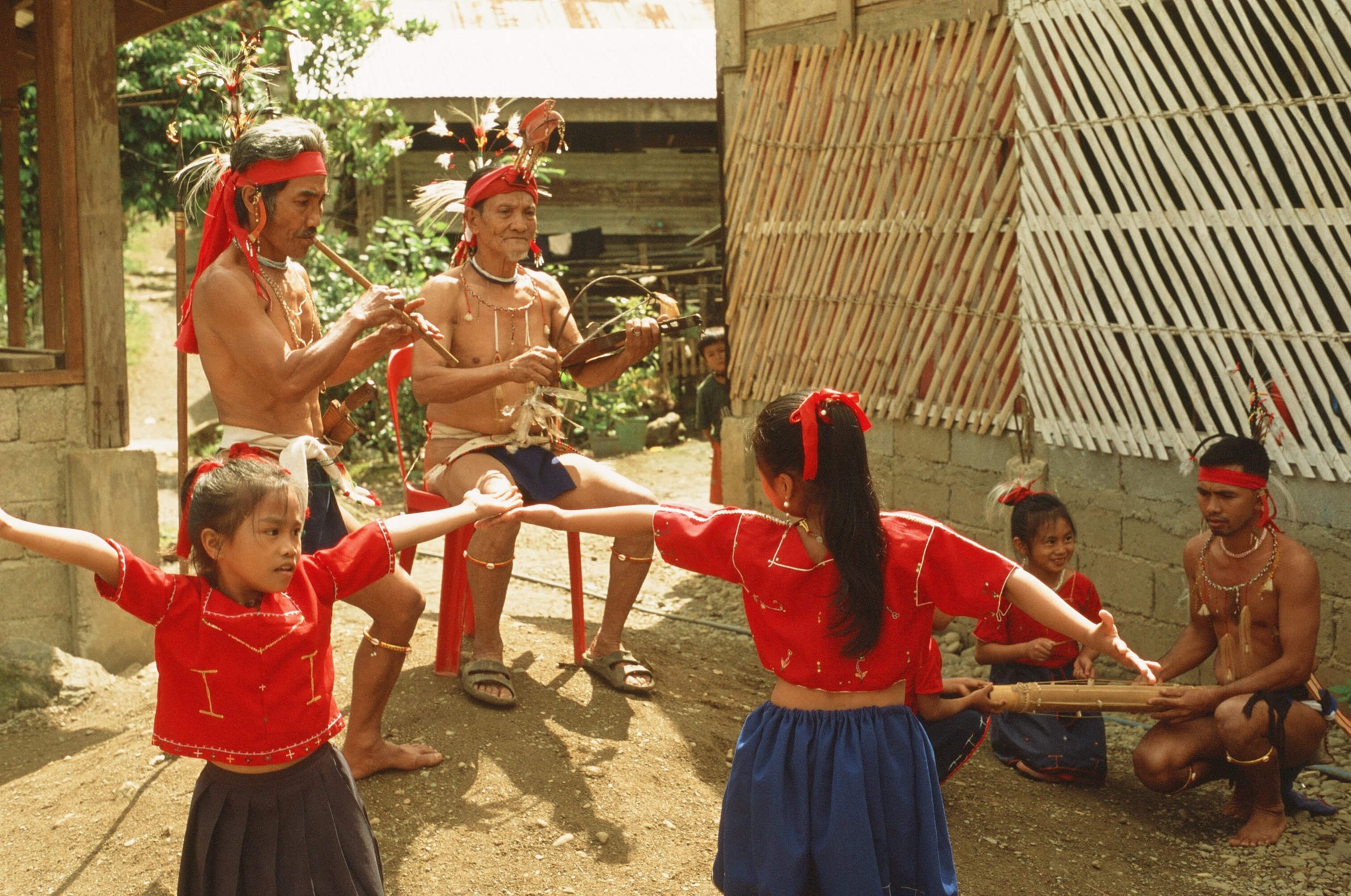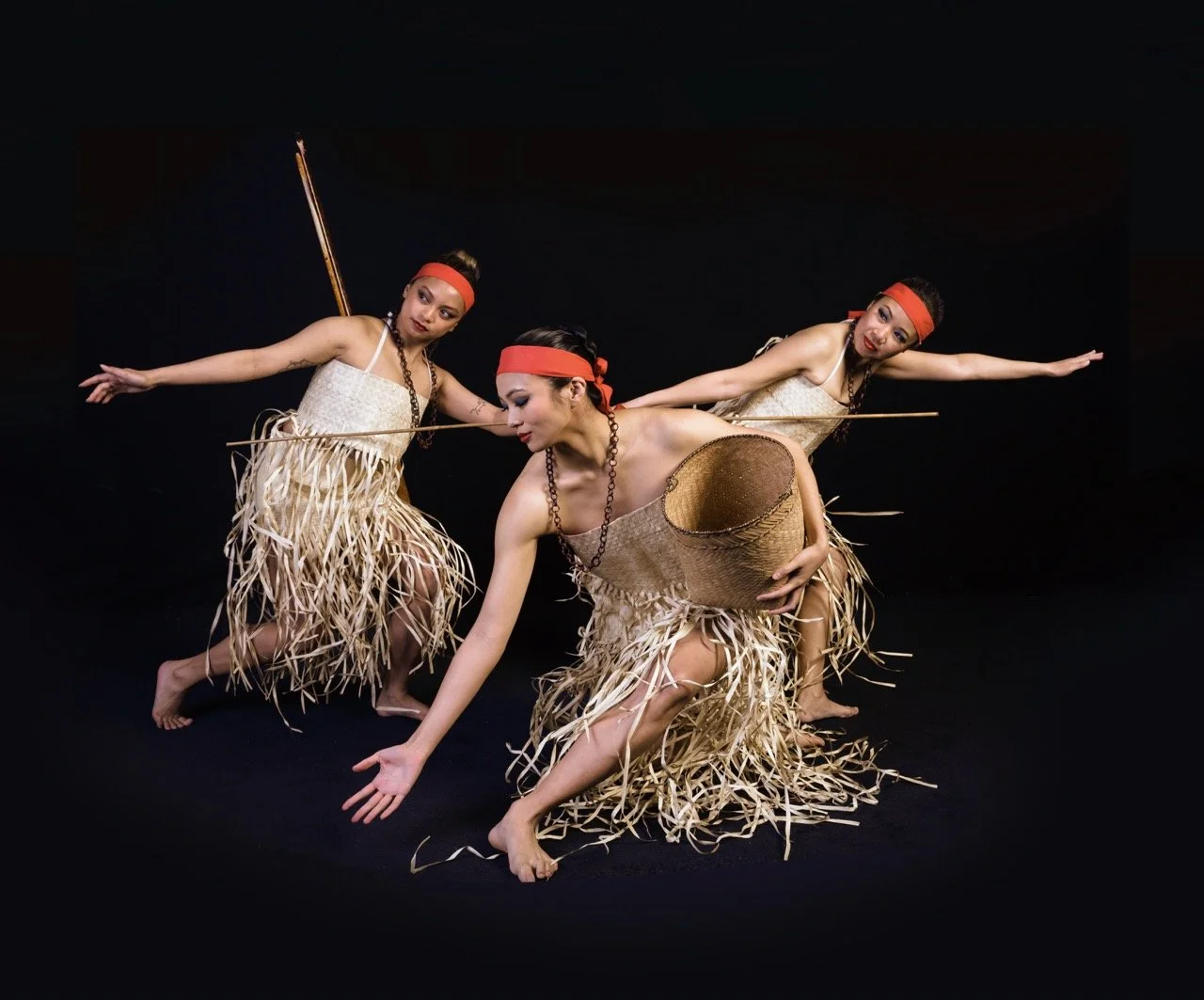Parangal Dance Company pays tribute to Indigenous culture bearers through music, dance, and collaboration
Bugkalot Indigenous community of Pelaway, Alfonso Castaneda, Nueva Vizcaya with elder Adolfo Pacnal Quiwegh, a Culture Bearer, and family of Frederico Barcelo, 2020. Photo: Kim Requesto
For over 16 years, Parangal Dance Company has celebrated the cultural heritage of Indigenous communities across the Philippine archipelago, paying tribute to culture bearers who have dedicated their lives to protecting and preserving their ancestral lands and traditions.
Parangal, meaning tribute, is based on the unceded Ramaytush Ohlone Territory, otherwise known as San Francisco, California. Under the direction of Eric Espartinez Solano, this Filipino folk dance and music company connects Filipinos in the diaspora to Philippine cultural heritage, music, and dances. Through research, workshops, and performances, Parangal seeks to foster awareness and appreciation of Indigenous practices, arts, and knowledge while supporting the unique talents and contributions of artists and dancers.
“It’s really about finding their purpose and also what their other passions are to build up on that purpose. So in that way, we’re not always just taking, but we want to make sure we also give back to the artist,” Solano said.
Education and advocacy have been central to Solano’s work as a Philippine dance practitioner since 1993. He has led regular immersion visits with over 30 Indigenous communities in the Philippines, a commitment he has upheld since 2005. His dedication extends to mentoring artists who share his passion for preserving and promoting Philippine culture and arts.
Raised in the Mission District, Kim Requesto has been a part of the Philippine folk dance community for nearly two decades. Her mother taught at a local dance company, exposing Requesto to Indigenous practices and traditions during her childhood. It was under Eric’s leadership and mentorship in Parangal that Requesto gained a deeper understanding of Indigenous cultures, histories, and movements.
With Solano’s guidance, her journey into cultural work took on greater depth. As an Artistic Lead with a background in photography, Requesto has conducted field research with various Indigenous ethnolinguistic communities, including Ata Manobo, Yakan, Maguindano, and Kalinga. In 2022, she founded Pangalay Circle, a series of workshops and dance circles that connect community members with seasoned practitioners specializing in Pangalay dances.
In Maguindanaon attire for Ipat a Kadsakay. Culture Bearers–Faisal Monal, Danny Mokatil, Esmael Kamid, Kalikod Samad. Photo: Kyle Adler
“My cultural work really began once I started learning from Eric. He’s taught many of us the importance of sharing resources and creating open, inclusive spaces that welcome people to learn and connect through movement,” Requesto said.
Requesto has witnessed Parangal’s evolution over the years, from performing choreographed dances to creating collaborative pieces with Indigenous culture bearers. Through these artistic endeavors, Parangal seeks to raise awareness about the struggles Indigenous peoples face in the Philippines and expand networks of solidarity.
According to human rights organizations, the Philippines is considered one of Asia’s most dangerous countries for environmental activists and land defenders. Indigenous leaders and activists who oppose large-scale projects that endanger their ancestral lands and cultural heritage are often subjected to threats, violence, and “red-tagging.”
“It’s important to always remember that, with culture, everything intersects,” Requesto said. “The only reason why we are able to learn about our culture is because the Indigenous people have upheld their traditions. They’ve made sure that in spite of colonization, it’s still alive, strong, and powerful.”
In early 2022, Matthew Espina Harris joined Parangal’s Artistic Team with a vision to expand the company’s repertoire and blend traditional rhythms and melodies into musical arrangements. He specializes in Maguindanaon/Meranao Kulintang music and has studied under groups such as House of Gongs, Little Manila, Kulintang Dialect, and Salamindanao Dance Company. Immersing himself in the customs of communities throughout the Philippines has enriched his approach to music in California.
“I draw a lot of inspiration from the communities back in the Philippines. I love being able to connect with them personally, watch their performances, and see how they celebrate Kulingtang music as a living tradition, whether they’re on stage or at home with their friends and family playing music,” Harris said.
Honing the art of Philippine music and dance is a significant endeavor. Harris and the other members of Parangal emphasize the careful and respectful approach needed to preserve and honor these cultural arts.
Photos: Kyle Adler
Jonathan Mercado has been a Sagayan practitioner with Parangal since 2015. His current practice delves into Sagayan, an ancient dance that predates Islam and Christianity of the Maguindanaon people from Cotabato, Mindanao. His background in various martial arts disciplines, including Visayan Style Corto Kadena and Muay Thai, has allowed him to incorporate his unique style into Filipino folkloric performances.
“There’s a lot of room for exploration, but it’s also a space where I need to acknowledge and respect the movement for what it is,” Mercado said. “I need to be able to learn it and participate in it that way while also giving my respects to my teachers and those who are not only learning from me but whom I’m also passing it forward to.”
In his role at Parangal and as a youth instructor for the Agos Youth Program at Kularts, Mercado believes that introducing artistic practices to young people in the diaspora can help cultivate a stronger appreciation for the cultural significance and value of these art forms.
“It’s always important to be able to acknowledge the histories of things, but with us diasporically, it’s important for us to also look forward and see what can be done to be progressive,” Mercado said.
After completing graduate school on the East Coast, Vanessa Brake Gomez moved to the San Francisco Bay Area to explore new job opportunities. It was through a Craigslist ad that Vanessa stumbled upon Parangal. Longing to rekindle her connection with the community, she joined a Parangal workshop in November 2009 and has been a member ever since.
Gomez, who currently serves as Parangal’s Board President, provides guidance and support to fulfill Parangal’s mission. Through fundraising, mentorship, and outreach, the company aims to expand its various initiatives, from conducting research visits throughout the Philippines to purchasing crafts, ethnic textiles, and instruments directly from various Indigenous groups.
“My hope is that we just continue to nurture our relationships with cultural bearers, continue to expand the cultural bearers in which we’re able to be in relationship with so that we can continue to support them as well because it’s all about the livelihood of our peoples in the Philippines.”
From every song and performance, Parangal is the vital bridge needed to connect the cultural arts and preservation efforts of Philippine folk dancing for generations to come.






